

This post is the first in a series that explains how to set up a sound wall. This post focuses on the Vowel Valley Sound Wall. I provide information about English vowels, explain how to set up the vowel valley, and teach you why it is set up in that way. Finally, I leave you with information and details about my new Sound Wall Course which teaches you how and why to use a sound wall in your classroom.
The science of reading is changing the way we teach students to read. One of the biggest instructional shifts I see is teachers taking down their A-Z word walls and replacing them with phoneme sound walls.
I do still hear from many of you who are thinking about using a sound wall. You have questions and maybe some concerns. You want to know more about sound walls and their benefits before you take the leap. I understand this and respect the fact that you want to make informed, intentional decisions when it comes to your instruction and classroom.
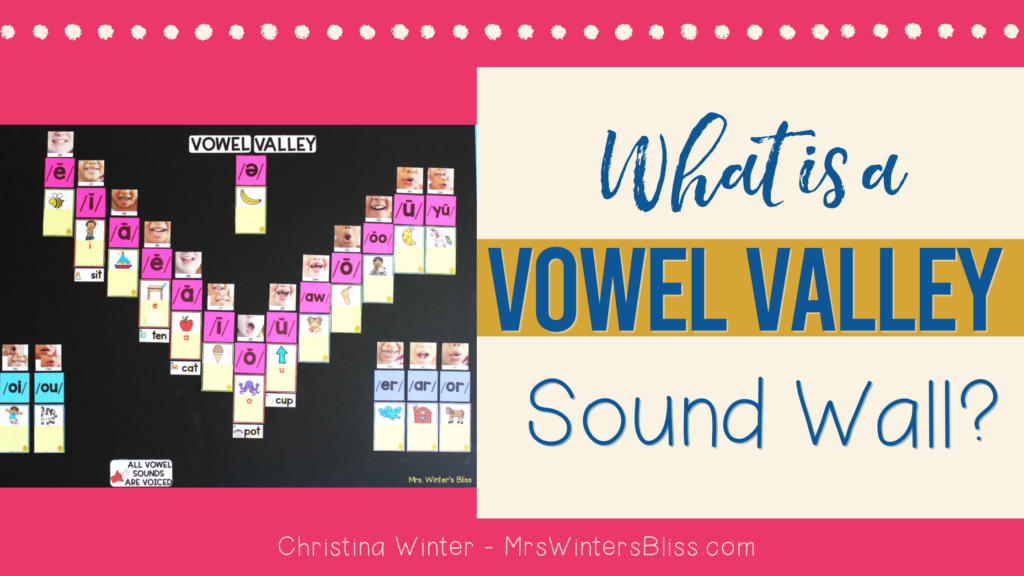
I frequently get asked about the different parts of a sound wall. You want clear directions for how to set it up. To help you, I have decided to do a short blog series that will focus on the two parts of the sound wall: the consonant sound wall and the vowel valley.
This post will focus on the vowel valley. I provide information about vowels and answer the question “What is the vowel valley?” Then I explain how to set up your vowel valley and teach you why it is set up that way. Finally, I’ll leave you with details about my Sound Wall Course! This course offers you information about how to set up a sound wall, the benefits of using a sound wall, and exactly how to make it an effective learning and teaching tool in your classroom!
What is a Sound Wall?
Before we dive into the vowel valley, let’s review a bit about sound walls….
A sound wall is a way to organize and display the different sounds (or phonemes) we hear in speech. Similar to a word wall, a sound wall is a place for students to reference when they are spelling and reading words. But UNLIKE a traditional A-Z word wall, words on a sound wall are grouped by their sounds, not their beginning letter.
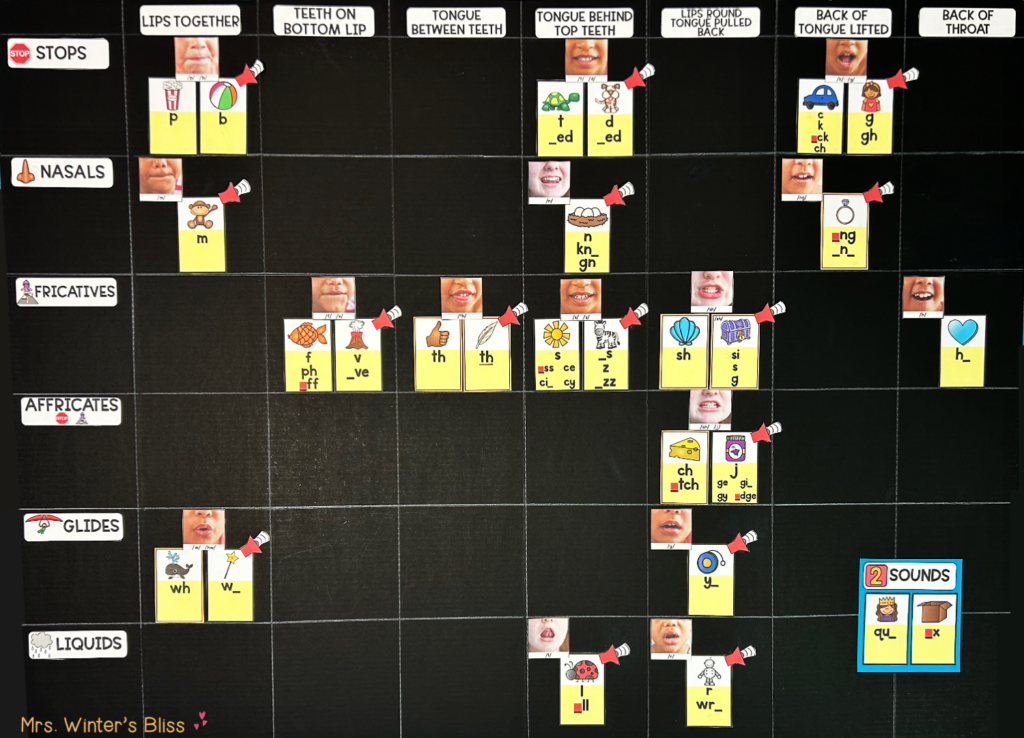
Because sounds cannot be written, we use letters to represent the sounds. A grapheme is the written representation of one phoneme or sound. A sound wall matches our speech sounds (phonemes) to the letters (graphemes) that represent those sounds.
There are two parts of a sound wall – a consonant sound wall and a vowel sound wall, or a vowel valley. They’re organized separately and in different ways.
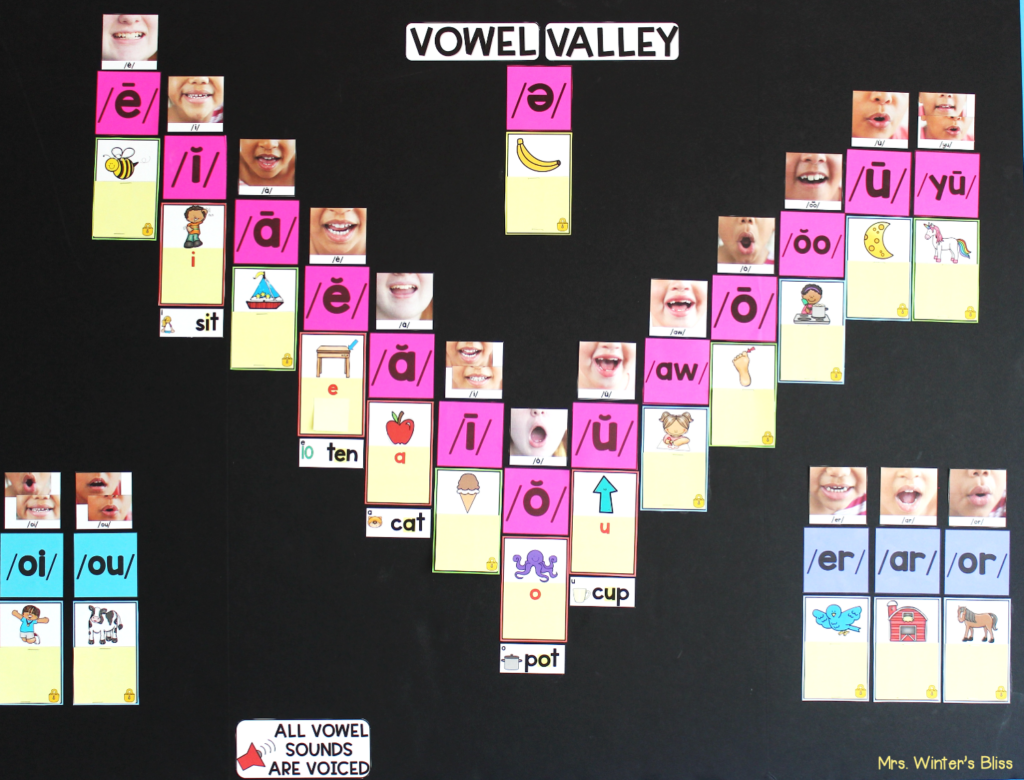
Information about Vowels
Of the 44 English phonemes, 19 are vowels. Wondering how this can be? While we only have 5, sometimes 6 vowel letters in English, those letters can combine to make 19 vowel sounds.
The most important distinguishing characteristic of a vowel in English from another is where it is formed in the mouth. This is the place of articulation.
The articulation of vowels differs in:
-tongue position (front, mid, or back)
-tongue height (high to low)
-lip shape (rounded or ungrounded)
What is the Vowel Valley?
The vowel valley or vowel sound wall is how you display the vowel phonemes.
It is organized by the place of articulation. Visually, it is represented in the shape of a V or a valley.

I often get asked, “Does the vowel valley needs to be in the V-shape?”. The answer is yes, it should be. The V shape is intentional, as it mimics the change in the position of our mouth and the shift in our jaw when we produce the different vowel sounds.
For example, when you make the first vowel sound, /e/ your jaw is high. Your lips are in a smile position. As you move down the vowel valley your jaw lowers to open and your tongue drops. When you reach the bottom of the valley, your mouth is open and your smile lessens.
As you move back up the vowel valley the shape of your mouth tightens and your mouth round. These are the back, rounded vowels. Your tongue retracts toward the back of your mouth and the sound comes from the back of your throat.
Check out this video for more information about the vowel sound walls. It really helped me envision what it looks like and how I would use it in my classroom.
Vowels Outside of the Vowel Valley
When you look at the vowel valley, you’ll see some vowel sounds placed outside the V. They are the diphthongs and r-controlled vowels.
Diphthong: A sound formed by combining two vowels in a single syllable. The sound begins as one vowel sound and moves towards another.
R-Controlled Vowels: Vowels that are followed by the letter r, where the letter r changes the sound of the vowel. This is sometimes referred to as the “bossy r” because it “bosses around” the vowel.
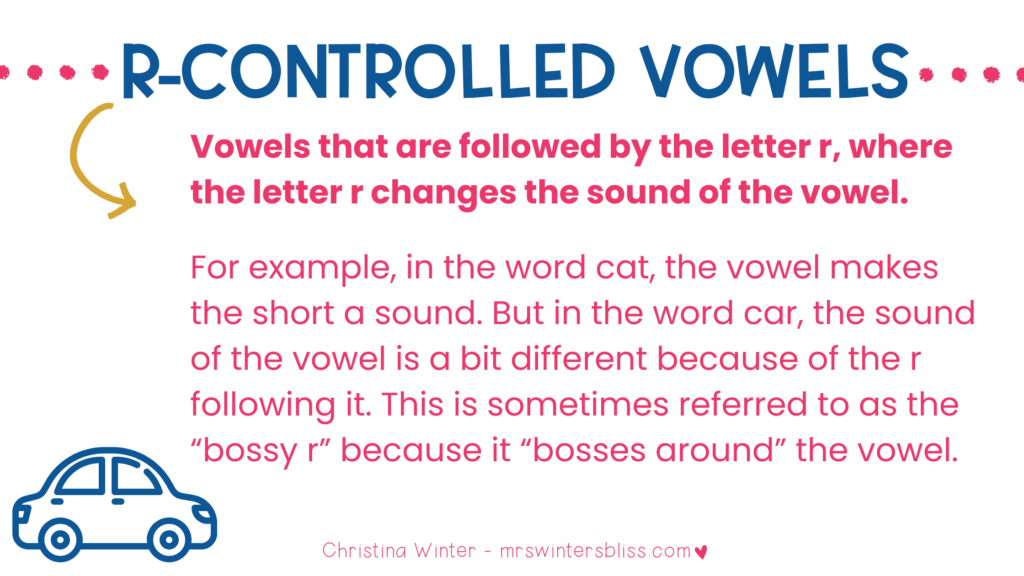
Finally, floating at the top of the vowel valley, you will find a funny upside-down e. This is the schwa phoneme. Schwa is the most common vowel sound in the English language. It sounds like the short u as in banana or sometimes short i vowel sound as in pencil. Many say it is a lazy sound because you hardly open your mouth to create the sound. Take a look at this post to learn more about the schwa sound.
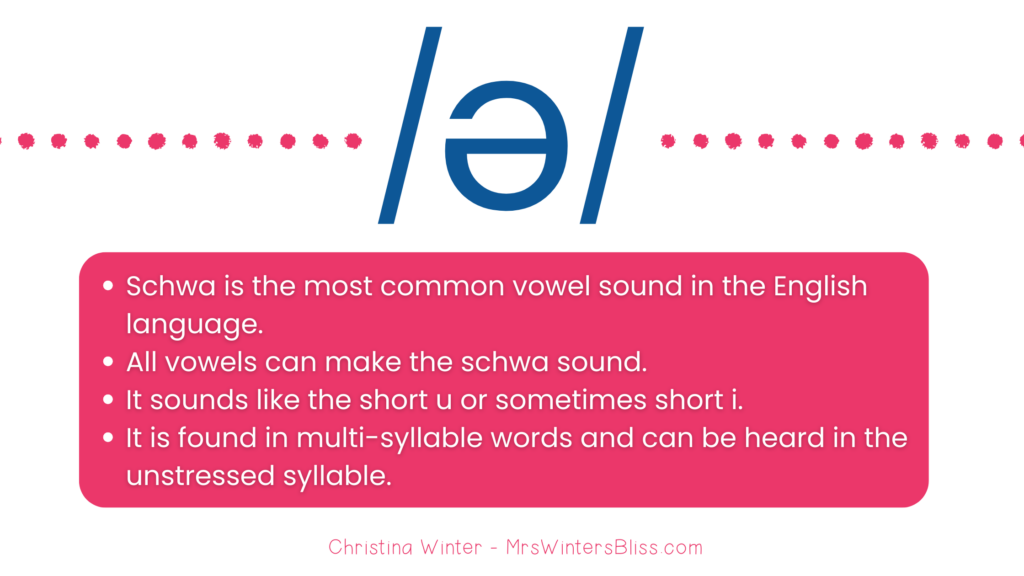
I hope the information I have shared here today helps you to better understand the vowel valley and how to set it up in your classroom. Be on the lookout for my next post where I’ll dive into the different ways to set up the consonant sound wall.
Are you looking for more help with your classroom sound wall?
I’ve got just the thing for you!
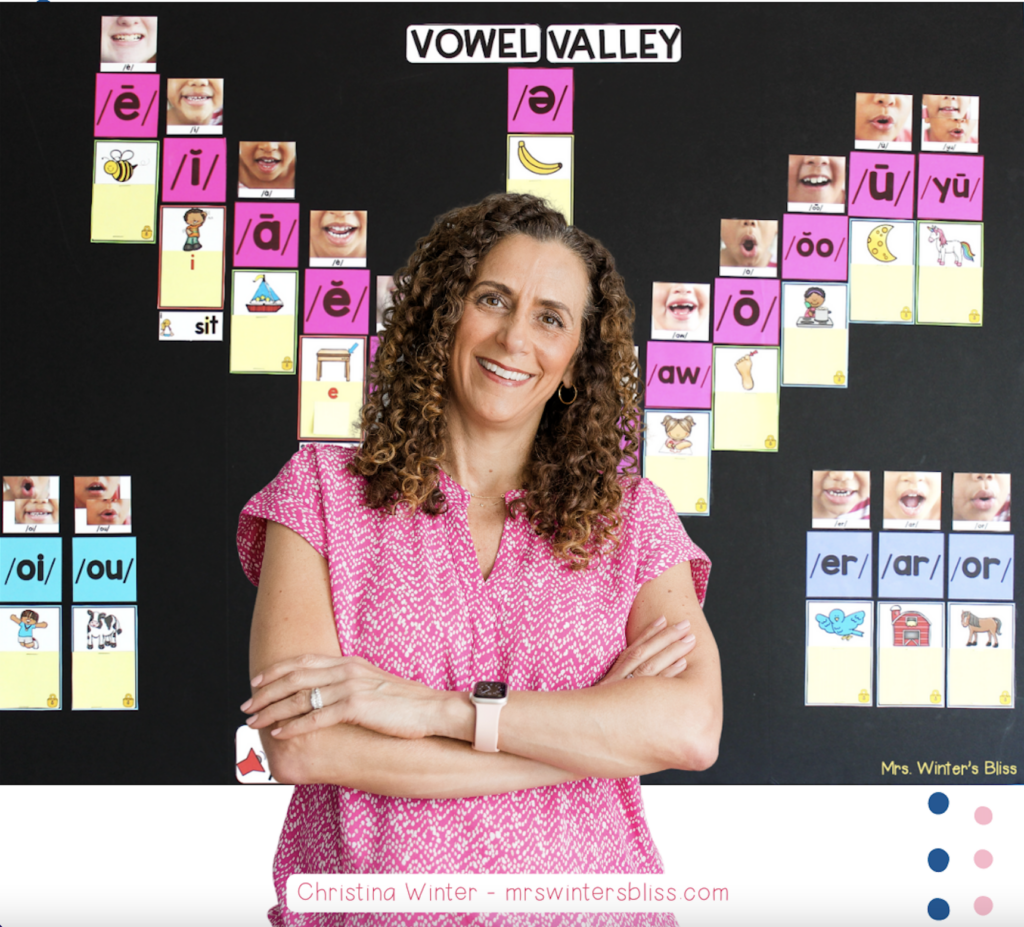
1
My new course, The Science of Sound Walls, will take all the guesswork out of using your sound wall. This virtual course is your complete training and implementation plan for using a sound wall in your kindergarten, 1st and 2nd-grade classroom.
Discover what is inside The Science of Sound Walls here.
.









